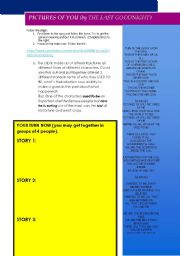Is we present tense? What is the present tense of the verb tense?
We can use the present perfect tense in the following scenarios: For actions or events that began in the past and have continued into the present To show an action that has been completed To indicate a time period that has not yet finished Used with phrases that begin with “This is the first” or. However, depending on which way we form the present tense, it can also be used to describe things that happened in the past, or even certain events that are planned to happen in the future.
Present continuous. Use the present tense to describe what you do and what things are like. We use certain forms of verbs to show that the timeline for the sentence is currently happening or continuing to happen.
This means in detail that it describes generaltruths, habits, repetitiveactions, perceptions (especially of the senses) that are taking place at the momentor that apply now. If you want them to be fully present, tell your stories using the present tense. That brings me to another advantage of telling your stories in the present tense: You often animate, act, play and. Read about how to make the present simple here.
It snows in winter here. Two and two make four. Similarly, we need to use this tense for a situation that we think is more or less permanent. See the present continuous for temporary situations.
To give instructions or directions: You walk for two hundred meters, then you turn left. To express fixed arrangements, present or future: Your.
It tells what is always, sometimes, or never true, or what happens over and over. It uses the base form of the verb (the infinitive without ‘to’) except in the third person singular. Oranges used to cost very little in Florida, but now they are quite expensive.
We use this tense for unfinished and finished actions. We often use stative verbs. In order to use the verb properly, you need first to learn about it!
Sound knowledge of tenses will help us to construct sentences with appropriate forms of verbs to. Depending on the person, the simple present tense is formed by using the root form or by adding ‑s or ‑es to the end.

You can use the continuous present tense to say the same thing: “Annie’s train is leaving New York today. She is arriving here tomorrow at five. It is used to describe habits, unchanging situations, general truths, and fixed arrangements. In the present simple 3rd person singular (he, she, it), add s, es, or ies to the base form of the verb.
Le présent is one of the most frequently used tenses in the French language. It corresponds to the English simple present, and we use it to talk about facts, current situations, and repeated actions, as well as scheduled future actions.
N: He does not speak. However, somewhat unusually, the present tense can also be used to describe past and future activities. This verb form can also be used with time adverbs to talk about an activity that is continuing into some future time (e.g. in one hour’, this Fall’). Earth revolves around the Sun.
There are two main situations where you always need to use the present tense. The Sun rises in the east.

In English grammar, the "historical present " is the use of a verb phrase in the present tense to refer to an event that took place in the past. In narratives, the historical present may be used to create an effect of immediacy.

Also called the "historic present, dramatic present, and narrative present. Thanks in advance for your time and explanation. This little article is the best one I have read concerning this subject.
You have clarified the issue for me.
Hiç yorum yok:
Yorum Gönder
Not: Yalnızca bu blogun üyesi yorum gönderebilir.